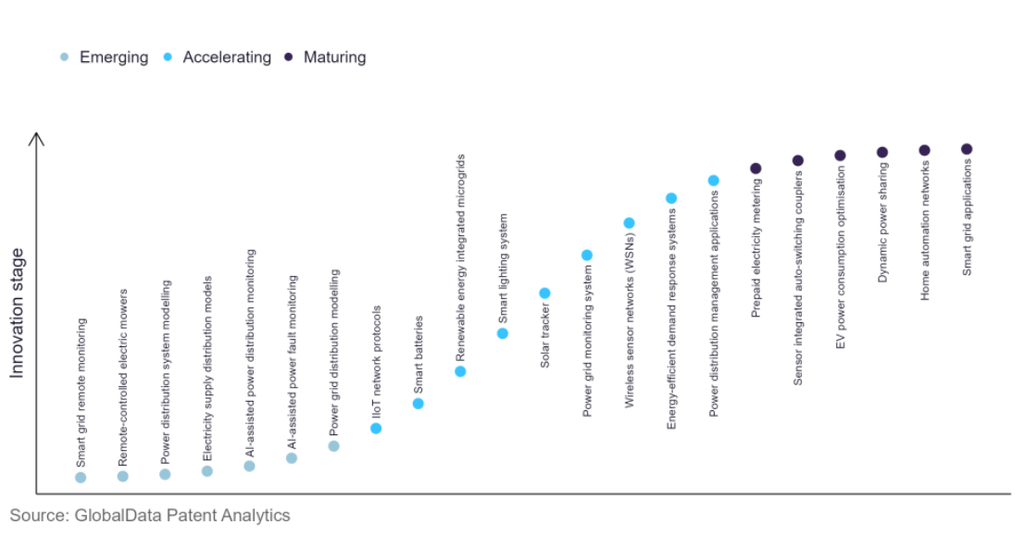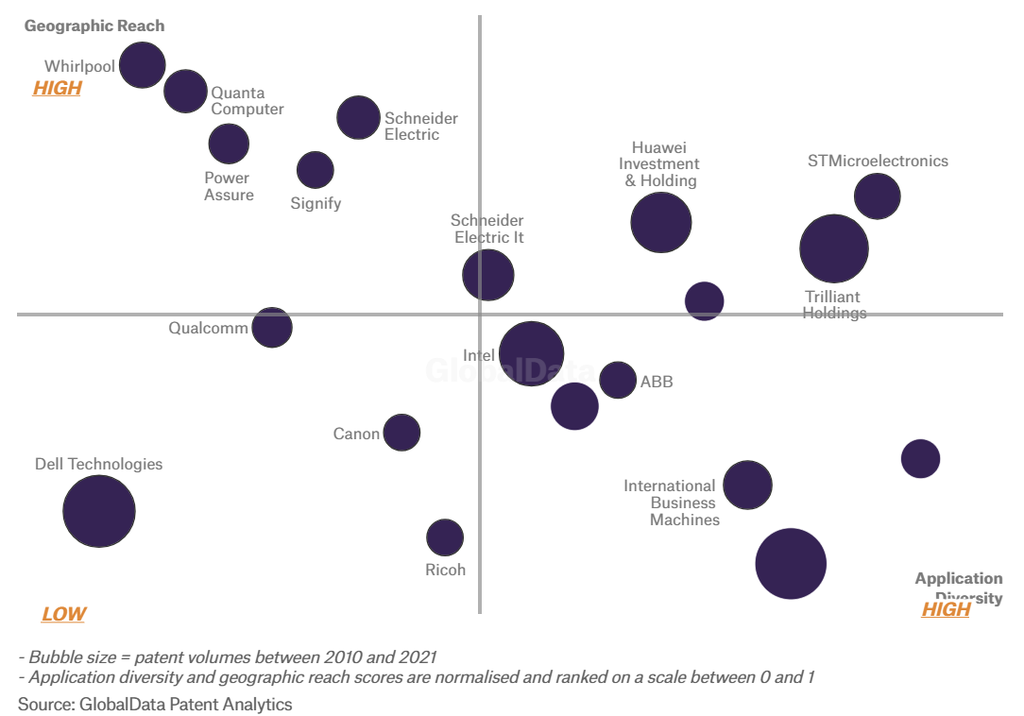The power industry continues to be a hotbed of innovation, with activity driven by rising demand for power, push for a greater share of renewable generation and need to reduce greenhouse gas emissions, and the growing importance of technologies such as energy storage, smart grids and load control devices.
In the last three years alone, there have been over 439,000 patents filed and granted in the power industry, according to GlobalData’s report on Artificial Intelligence in Power: Energy efficient demand response systems.
However, not all innovations are equal and nor do they follow a constant upward trend. Instead, their evolution takes the form of an S-shaped curve that reflects their typical lifecycle from early emergence to accelerating adoption, before finally stabilising and reaching maturity.
Identifying where a particular innovation is on this journey, especially those that are in the emerging and accelerating stages, is essential for understanding their current level of adoption and the likely future trajectory and impact they will have.
90+ innovations will shape the power industry.
According to GlobalData’s Technology Foresights, which plots the S-curve for the power industry using innovation intensity models built on over 83,000 patents, there are 90+ innovation areas that will shape the future of the industry.
Within the emerging innovation stage, power distribution system modelling, electricity supply distribution models, and AI-assisted power fault monitoring are disruptive technologies that are in the early stages of application and should be tracked closely. Smart batteries, renewable energy integrated microgrids, and smart lighting system are some of the accelerating innovation areas, where adoption has been steadily increasing. Among maturing innovation areas are prepaid electricity metering and home automation networks, which are now well established in the industry.
Innovation S-curve for artificial intelligence in the power industry

Energy-efficient demand response systems is a key innovation area in artificial intelligence
Demand response and energy efficiency programmes are complementary. The two programmes share some similarities, but are not interchangeable. Energy efficiency programmes reduce energy use, both during peak and off-peak periods, typically without affecting the quality of services provided. Demand response programmes entail load management via direct control at peak periods, interruptible load tariffs, and economic response.
GlobalData’s analysis also uncovers the companies at the forefront of each innovation area and assesses the potential reach and impact of their patenting activity across different applications and geographies. According to GlobalData, there are 20 companies, spanning technology vendors, established power companies, and up-and-coming start-ups engaged in the development and application of energy-efficient demand response systems.
Key players in energy-efficient demand response systems – a disruptive innovation in the power industry

‘Application diversity’ measures the number of different applications identified for each relevant patent and broadly splits companies into either ‘niche’ or ‘diversified’ innovators.
‘Geographic reach’ refers to the number of different countries each relevant patent is registered in and reflects the breadth of geographic application intended, ranging from ‘global’ to ‘local’.
Patent volumes related to energy-efficient demand response systems
Trilliant is one of the leading patent filers in energy-efficient demand response systems. Trilliant is a smart energy communications company that assists companies in deploying a broad set of smart grid initiatives from advanced metering to distribution automation, to consumer applications such as demand response, lighting control and distributed energy resources to the customers. Trilliant provides smart distribution, smart metering, smart consumer, smart cities and Internet of Things (IoT) services.
In terms of application diversity, Huawei Investment & Holding, ABB, and Intel are leading patent filers in energy-efficient demand response systems.
By means of geographic reach, Schneider Electric IT, Schneider Electric, and Power Assure are amongst the leading patent filers in energy-efficient demand response systems.
To further understand how artificial intelligence is disrupting the power industry, access GlobalData’s latest thematic research report on AI in Power.
GlobalData, the leading provider of industry intelligence, provided the underlying data, research, and analysis;used to produce this article.
GlobalData’s Patent Analytics tracks patent filings and grants from official offices around the world. Textual analysis and official patent classifications are used to group patents into key thematic areas and link them to specific companies across the world’s largest industries.